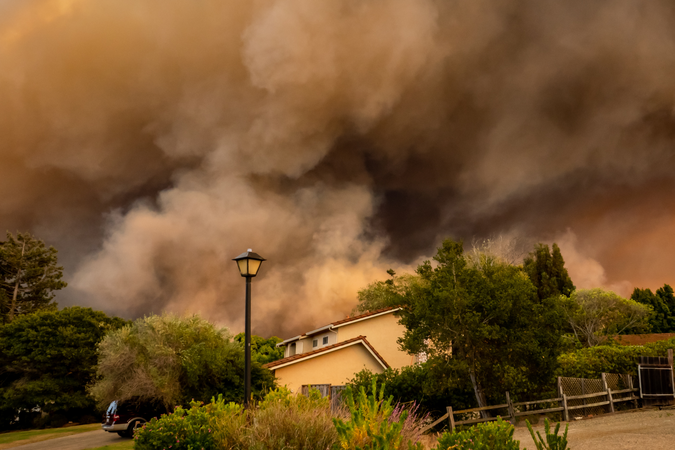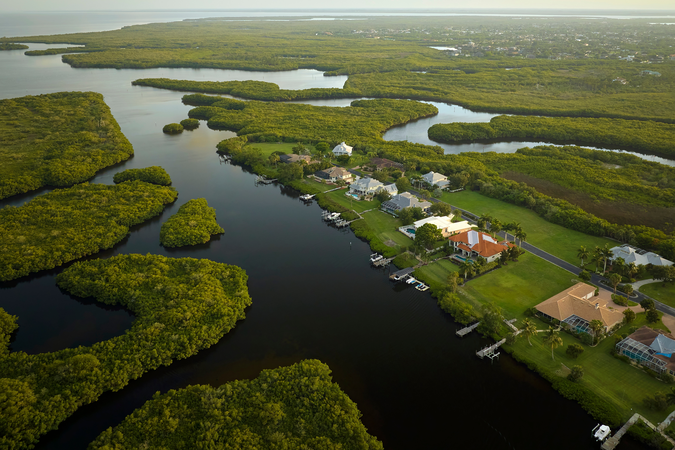Testimony on the Use of Natural Infrastructure for Watershed Restoration and Water Management
Forest management can actively support water capture and storage, taking advantage of natural infrastructure to protect water sources and restore watersheds.
Thank you for inviting me to speak with you today regarding the use of natural infrastructure as a means for watershed restoration and for water management.
By way of background, Resources for the Future (RFF) is an environmental economics think tank in Washington DC that was established in 1952. RFF’s mission is to improve environmental, energy, and natural resource decisions through impartial economic research and policy engagement. I began as Vice President for Land, Water, and Nature Program (LWN) at RFF in 2017 after nearly 30 years with the US Department of Agriculture, most of the time with the US Forest Service in a variety of positions including head of research for the agency. During my time with the Forest Service, I twice served on the Interagency Wildland Fire working group to devise and implement a national strategy focused on wildfire preparedness and response.
As part of the LWN Program development, in 2018, a series of roundtable discussions were held in Chicago, San Francisco, Denver, Houston and Washington, DC, to identify a short list of critical water resource issues where the environmental economics capacity of RFF could have impact. The concept of source watershed protection and sustainable management surfaced as one of the top items across nearly all the roundtables, and hence is relevant to today’s discussion. The fact that this concept was supported by stakeholders from diverse geographies suggests that these watersheds are increasingly valued for what they can provide downstream.
Natural infrastructure is defined as a 'strategically planned and managed network of natural lands, such as forests and wetlands, working landscapes, and other open spaces that conserves or enhances ecosystem values and functions and provides associated benefits to human populations'
— Benedict and McMahon 2006
Source water protection or investing in watershed services has caught on as a strategy in both the US and globally to ensure a clean water supply. Source water protection is frequently hailed as a more cost-effective alternative to building water treatment infrastructure. Vogl et al 2017 claim, and cites several studies, suggesting healthy upstream watersheds contribute greatly to water quality and quantity improvements. In many cases, forests especially support water capture and storage and enhance reliability of water supplies in downstream communities. (Ellison et al 2017) Management plans can be very effective for water quality and quantity improvement, especially when plans are tailored according to land cover and land use (Vogl et al 2017). Research has also shown that there is a direct relationship between the amount of forest cover and cost for water treatment. For example, in an analysis of 27 US water suppliers, treatment costs for drinking water from watersheds 60% or more covered by forests were half of the costs compared to watersheds only 30% covered (Postel and Thompson 2005). Clearly, retaining forest cover has positive benefits, and restoring forest cover is critical in watersheds that are disrupted by disturbance, such as wildfires or extensive mortality from insects and disease.
Learning from case studies:
- Portland, OR—Bull Run watershed is the primary watershed for Portland, serving about 831,000 people. The reserve to protect the watershed was established in 1892 and has been increasingly protected over the years. It bans activities such as grazing and logging, and is mostly closed to public access. It is densely forested, with frequent rainstorms in the November-April months. Due to the early establishment of protection for Bull Run, there are currently no anthropogenic threats to Portland’s drinking water supply. However, higher levels bacteria present from wildlife use and turbidity driven by storms and wildfires resulted in the need for more water treatment. Although the city decided to build a filtration facility with a price tag of at least $500 million, there was also the option of investing in UV treatment facilities, which were cheaper at around $105 million.
- Denver, CO—The Upper South Platte River (USPR) watershed is geographically the largest water source for Denver, supplies about 1.3 million people with water and three-quarters of Colorado’s residents. The area also contains 1.6 million acres of public lands, much of which is a popular destination for fishing and other tourism and contains several endangered species. The partnership was triggered by sediment loading into Denver’s reservoirs following a wildfire on the National Forests, and the clear need to do forest restoration but challenged by the lack of funds by the Forest Service. The USPR watershed stakeholders include: Denver Water, Aurora Water; Co Dept. of Public Health and Environment CDPHE; Park, Teller, Jefferson, and Douglas counties; USFS, BLM, EPA; Trout Unlimited; Center of Colorado Conservancy District; Upper South Platte Citizen Representative; Coalition for the Upper South Platte.
- It is estimated that the cost to implement proposed management approaches is about $450,000, and funding will come from a broad base of sources and in-kind donations of time and materials. Denver Water, even with current treatment facilities, currently does not have capacity to meet drinking water demands if USPR watershed is disabled for an extended time. Potential financial and water risks would be about $1.7 billion to replace lost water if USPR goes out.
- The Sierra Nevada—Impacts of the 2013 Rim Fire. The Table below provides a summary of an impact assessment done by Earth Economics to provide values for “indirect losses” from the fire using benefit transfer analysis. The analysis found more than $700,000,000 (at the high end) worth of lost benefits across different land cover types. A deeper analysis looking specifically at the ecosystem service values identified water regulation as an important component of these watersheds, but there were no valuation data for California.
In conclusion, a frequently cited statistic is that 50% of our drinking water comes from our forests; management of these forests with intentionality to support water capture and storage takes advantage of this natural infrastructure.
For more information, please download the full testimony.




